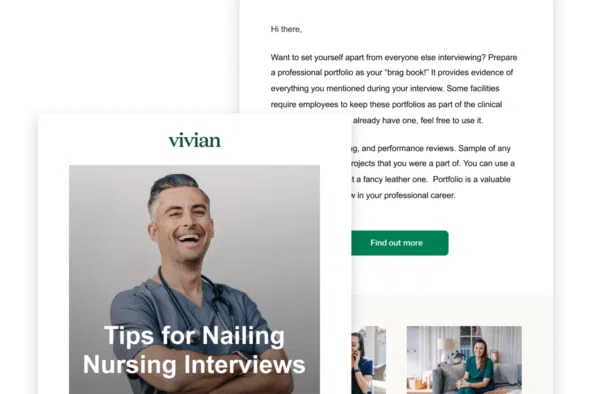Nurse practitioners (NPs) provide primary healthcare to millions of Americans, counseling, diagnosing and treating patients. As advanced practice registered nurses, NPs have high-level clinical expertise that often allows them to pursue autonomous practice. They also enjoy the lucrative pay bump from a nurse practitioner’s salary, placing them among the highest-paying APRN specialties.
While there are many things to love about being a nurse practitioner, like all healthcare workers, they often find their jobs demanding and stressful. We spoke to a few NPs about the challenges they face in their work. Whether you’re an NP curious about the experiences of your peers or an aspiring NP weighing the pros and cons of the profession, consider these insights into the realities of nurse practitioner jobs.
Rigorous Training Requirements
Nurse practitioner jobs typically pay well. The average permanent NP salary was $53.77 per hour compared to the average staff registered nurse (RN) rate of $37.24 per hour, according to Vivian’s data on February 28, 2023. However, nurse practitioner salaries vary by experience, location, specialty and professional certifications.
Before enjoying the higher earning potential, you must invest significant time in your studies. Becoming an NP requires graduate-level training, resulting in 6 to 8 years of education, which can be costly and result in substantial student loan debt.
Aspiring NPs must:
- Earn a Bachelor of Science in Nursing
- Pass the National Council Licensure Examination
- Obtain state nursing licensure to practice as an RN
- Complete a Master of Science in Nursing or a Doctor of Nursing Practice
- Pass the appropriate national board certification exam based on your specialty
- Obtain a state NP license
If you’re currently working as an RN, your employer might provide tuition reimbursement toward a degree or contribute to the cost of board exams and specialty certification. These employee benefits can help offset the financial burden of earning a degree. Some employers may also offer student loan assistance or forgiveness programs. If you agree to work in a medically underserved area or Health Professional Shortage Area for a specified time, you may also be eligible for national or state-level student loan forgiveness programs.
Transitioning to Independent Practice

Many nurse practitioners look forward to taking an active role in a patient’s primary care, but the freedom to independently diagnose conditions and develop treatment plans might feel unfamiliar to those who have worked as RNs. It might take time to settle into your new NP job fully.
“The most challenging part about being an advanced practice nurse is making the mental shift to becoming an autonomous provider. I remember attending my first birth when the nurse asked me for orders, thinking, “Why isn’t she asking the provider?” Then it struck me. I am the provider,” said Dr. Caitlin Goodwin, MSN, RN, a certified nurse midwife consultant for Mom Loves Best.
“Obviously, I’ve adjusted to that shift over the last 7 years, but it left me with imposter syndrome until I got comfortable. It takes about 2 years to get into a professional groove where you feel more competent and knowledgeable,” Dr. Goodwin explained.
She noted that APRNs are well-prepared for their clinical responsibilities and added, “That doesn’t mean I wasn’t capable and knowledgeable at the beginning of my career. It just means it took a long time to feel that way!”
Responsibility for Patient Treatment Plans
About 70% of nurse practitioners deliver primary care, according to 2022 data from the American Association of Nurse Practitioners. Nearly 57% of NPs see three or more patients an hour.
As an NP, you receive training that helps you provide the best possible care to your patients. You might suggest lifestyle changes or certain medications, but you can’t control whether the patient implements your recommendations.
NPs who take charge of a patient’s care can find this situation emotionally difficult, said Cheryl Maes, Ph.D., APRN, FNP-BC. Dr. Maes is an assistant professor at the University of Nevada, School of Nursing and a practicing nurse in Las Vegas.
“I believe the hardest part of being a nurse practitioner is the emotional stress that comes along with taking care of patients,” said Dr. Maes. “Noncompliance to the recommended plan of care to patients is unfortunately real, and something dealt with on a regular basis.”
Dr. Maes added, “I believe we find ourselves in many situations which include but aren’t limited to being emotionally stressful. Therefore, situations such as this may come from the reality that you are responsible for a patient’s treatment plan.”
Working with Underserved Communities

Sometimes, socioeconomic factors stand in the way of patient care. Although you may know what your patients need to do to improve their health, they may not have the resources to implement your care plan, which can be disheartening.
“The most difficult aspect of being a nurse practitioner is trying to give patients the best care when they don’t have the best circumstances. At times, the treatment or medication needed isn’t covered by their insurance. Also, many patients don’t have the financial means to afford healthy foods or their medication,” explained Lawana V. Brown, MSN, WHNP-BC, Director and Associate Professor of the Women’s Health NP online program at Regis College.
“There is so much disparity in healthcare and there are so many marginalized populations. I would love to think that as the provider, I can dictate the best care for my patient and make sure they get it,” Brown says. “Often, that decision is made by entities other than me. This is frustrating.”
Emotional Stress and Mental Health
The stresses of being a frontline healthcare worker are well documented, and NP jobs are no exception. Healthcare professionals devote their careers to improving the lives of their patients, but working with sick patients can be mentally taxing.
The National Institute for Occupational Safety and Health notes that healthcare professionals must deal with intensely emotional situations, including human suffering and death. These situations can cause feelings of loss, guilt, helplessness and grief, putting NPs at risk for depression and burnout. Negative emotions are especially problematic for those who prioritize the well-being of others and don’t pay attention to their own mental health needs.
“Nursing is a tough job that can take a toll on mental, physical and emotional health,” said Susan Gentile, a nurse practitioner at ChoicePoint. Gentile has an Adult Nurse Practitioner Master of Science and provides urgent care as a primary care provider.
“Don’t get me wrong. I love being a nurse, but there are moments when your heart and soul are crushed into a million pieces,” she said.
To help manage stress and boost their resilience, nurse practitioners should practice mindfulness and self-care, plus use employee assistance programs to develop coping strategies when needed.
Exposure to Illnesses
When you care for sick patients, there’s always a risk of exposure to infectious diseases, needlestick injuries and other hazards.
“Nurses are expected to work long hours without breaks, so they come into contact with a lot of sick people. It makes them and their families susceptible to illness, as well,” explained Gentile.
She noted that working during the COVID-19 pandemic was particularly challenging.
“Some of the hardest days were when I was working at the hospital, especially when COVID-19 cases were on the rise again,” she said. “I kept washing my hands during the shifts and when I used to finish, I would take a long warm bath.”
Impacts of Stress on Personal Health

Nurses at all levels can experience stress. In addition to the factors described above, nurses cope with long hours of work, difficult patients and family members, staffing shortages and increased workload as more patients seek access to healthcare.
Persistent stress can translate into health problems. A 2021 study in BMC Nursing examined job stress and chronic conditions based on the positions and duties of nurses in Taiwan. The study found that compared to RNs, nurse practitioners and head nurses experienced higher levels of hyperlipidemia, hyperglycemia and hypertension.
However, the study also found that factors such as age, BMI and the responsibility of caring for other family members were also associated with hyperlipidemia, hyperglycemia and hypertension.
These results may mean that higher levels of these conditions also exist among NPs in the U.S., where NPs are, on average, older than RNs. In the United States, the average age of a registered nurse was 43.5 years in 2019, according to Statista. The average age of a nurse practitioner was 46 years, reported the American Association of Nurse Practitioners based on its 2022 National Nurse Practitioner Workforce Survey.
Reduced Autonomy in Some States
RNs enjoy similar responsibilities no matter where in the country they practice, but an NP’s scope of practice changes from state to state. As of October 2022, NPs can only practice independently in 26 states and the District of Columbia. However, California is expanding its scope of practice for NPs, making them the 27th state to do so.
In these full-practice authority states, NPs can practice to the full extent of their abilities, ordering and interpreting diagnostic tests and prescribing medication and treatment. Other states limit the scope of practice of NPs or require clinical oversight or collaboration with a physician.
This lack of consistency means NPs work differently in each jurisdiction. Depending on where you live, you may need to relocate to another state if you wish to practice autonomously. NPs considering travel nurse practitioner jobs should also be aware of different levels of autonomy and adapt their practice accordingly when crossing state lines.
This inconvenience may be worth it if you’re interested in earning higher wages. A travel nurse practitioner’s salary is typically higher than a permanent NP’s. Vivian’s salary data on February 28, 2023, shows that the average travel nurse practitioner salary was $3,461 per week or $86.53 per hour based on a 40-hour workweek.
Like any healthcare provider, being a nurse practitioner has good and bad points. While this advanced nursing role has many benefits, you may consistently find yourself in challenging situations. Always remember to take care of yourself as you take care of others.









